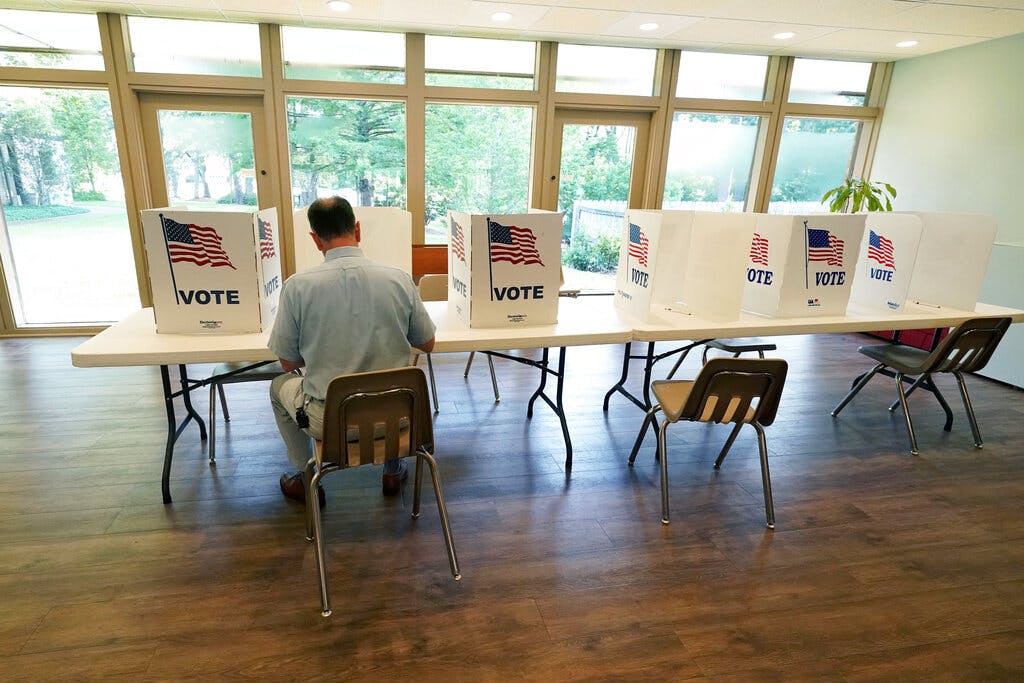Pollsters Struggle To Keep Up With a Shifting Electorate
A number of confounding variables — the pandemic, the state of America’s economy, the Trump factor, and Dobbs v. Jackson — are making polling difficult at the moment.

In the wake of big polling misses related to Tuesday’s special election in New York and in the recent Kansas abortion rights vote, evidence is mounting that polls and projections regarding control of the House may be operating on flawed assumptions.
Polling ahead of the abortion rights vote in Kansas suggested that the movement to pass an amendment that would have allowed the state to ban abortion had a slight lead; the measure failed by a 16-point margin.
In the special election in New York’s 19th district Tuesday, polling put the Republican candidate in an eight-point lead; the Democrat won by 10 points.
In four special elections since the Supreme Court ruling overturning Roe v. Wade, Democrats have consistently outperformed expectations — by nine points on average, according to FiveThirtyEight. Although special elections are substantially different than general elections, these polling misses raise the question: Are polls underestimating Democratic support?
In seeking to answer this question, the Sun spoke with an associate director at the University of Massachusetts Lowell’s Center for Public Opinion Polls, John Cluverius. He said the current environment is unlike anything pollsters have seen before.
“The problems of the polling environment right now haunt the nightmares of myself and every serious person who does polling,” he said. “It’s much like all of the inflation forecasters who said it’s temporary.”
A number of confounding variables — the pandemic, the state of America’s economy, the Trump factor, and Dobbs v. Jackson — are making polling difficult at the moment.
“Much like we are living in an economic environment that doesn’t fit neatly in a textbook, we are living in a political environment that doesn’t fit in a textbook either,” he tells the Sun.
Mr. Cluverius contends that the situation in the generic ballot polls and in Senate election polls bucks conventional wisdom. In a midterm election year, with inflation high and an unpopular president, Democrats should be getting “destroyed” in the polls, he says.
Instead, Democrats are neck-and-neck in generic ballot polling, and leading in Senate races where the GOP seemingly should have an edge.
Combined with results from special elections, which show significant Democratic overperformance, it’s clear to Mr. Cluverius that 2022 is not going to be a typical midterm election year.
The nagging question at the core of the polling issue is what these counterintuitive results mean for House races that pollsters and analysts have consistently said favor the GOP.
Democrats have pulled ahead in Senate projections and seem to be doing so in the generic ballot, but projections for their chances of winning the House of Representatives have remained stubbornly low, between 20 and 30 percent.
While that’s still a reasonable chance, Mr. Cluverius expresses some skepticism about how accurate these forecasts are for a variety of reasons.
The first, he says, is that “big changes in abortion policy makes people who don’t pay attention to politics pay much closer attention.” The electorate on election day, in other words, might be substantially different than the electorate that polls are sampled and weighted for.
As the Sun has reported, there has been a rush this year among people registering to vote in some states, and in states where data is available the newly registered voters have been mostly women and overwhelmingly Democrats.
The second issue, Mr. Cluverius says, is that the 2020 Census was “the most problematic Census taken in 50 years, and the Census is the basis for almost all population weighting that survey researchers do.”
Inaccurate Census data could lead to a skewed picture of what the American population and the American electorate actually looks like.
Mr. Culverius’s third and most significant reason for skepticism of House projections is that polling individual districts has become prohibitively expensive and increasingly inaccurate.
Many pollsters have simply abandoned the practice of polling individual districts. In a year when control of the House could come down to 14 or so toss-up races, the specifics in these districts could decide what party controls the lower chamber.
On top of that, 2022 will be the first election cycle to utilize the recently redrawn congressional districts, meaning analysts don’t have a good baseline for how generic ballot results translate into election results.
Analysts will have to simply make informed guesses as to how these factors will affect elections, based on less information than they’ve had in the past in a year that’s already proved to deliver surprise results.
Mr. Culverius argues that this confluence of factors should instill some doubt about projections for this year. The saving grace for Republicans might be the razor thin majority Democrats enjoy in the House, where they can afford to lose only a couple seats if they want to retain control.
Mr. Culverius argues that though the GOP might be saved by tight margins, a 20 percent chance of Democrats retaining the House is still bad odds for Republicans.
“If the probability of Democrats keeping the House are one in five, then the question becomes, ‘Are Republicans up for a game of Russian roulette?’ Because their odds would be better in Russian roulette,” he tells the Sun. “Whenever you gamble you should be prepared to lose.”

